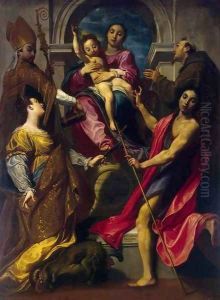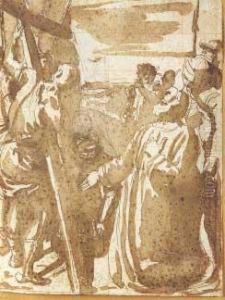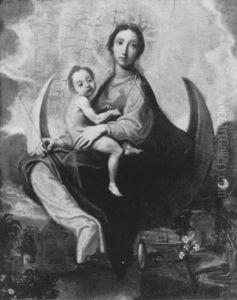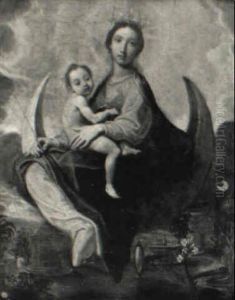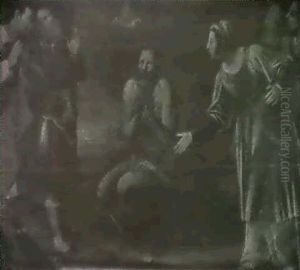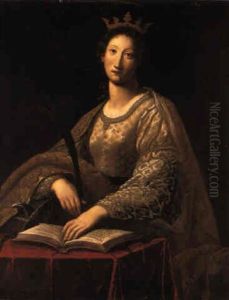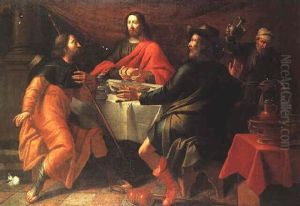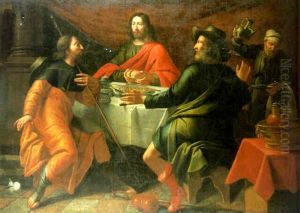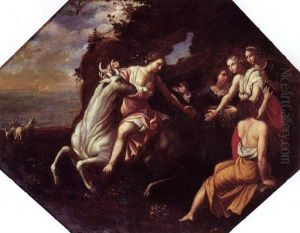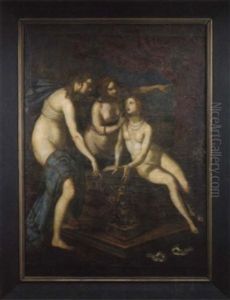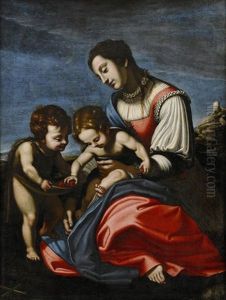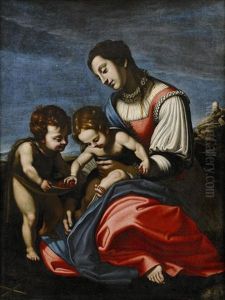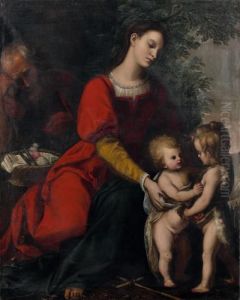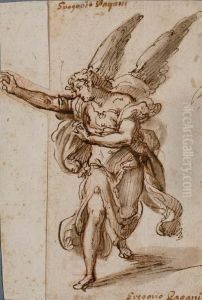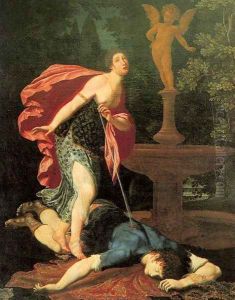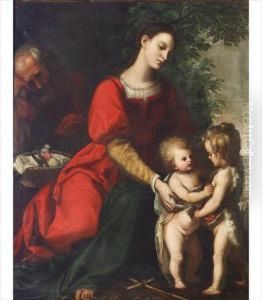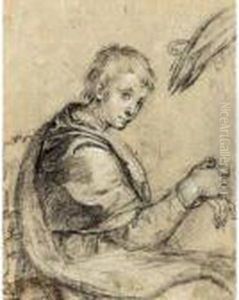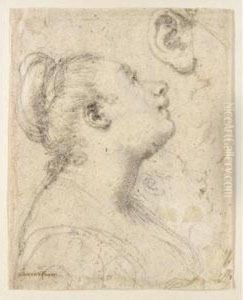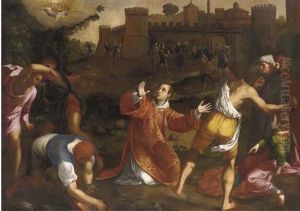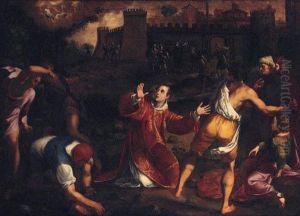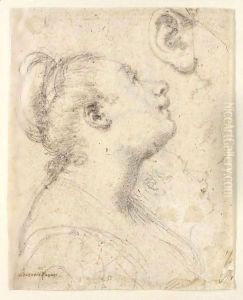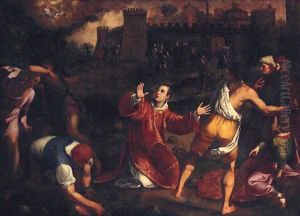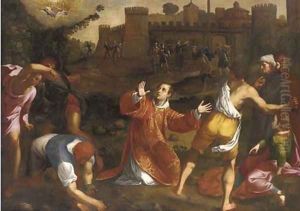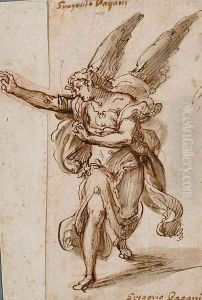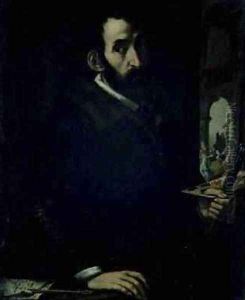Gregorio Pagani Paintings
Gregorio Pagani was an influential Italian painter of the late Renaissance, born in Florence in 1558. His work signifies a transition from the Mannerist style prevalent in the late 16th century to the more naturalistic approach that would dominate the early Baroque period. Pagani's early education in art was under the guidance of his father, Francesco Pagani, who was also a painter. However, it was his apprenticeship with the renowned Florentine artist Santi di Tito that profoundly shaped his artistic direction.
Pagani is often credited with blending the rigid Mannerist style with the emerging Baroque sensibility, characterized by a greater emphasis on emotion and naturalism. This synthesis is evident in his religious and mythological scenes, which are marked by dynamic compositions, robust figures, and a dramatic use of light and shadow. His works, while not as widely recognized as those of his contemporaries like Caravaggio or Annibale Carracci, played a crucial role in the evolution of Florentine painting at the turn of the 17th century.
In addition to his painting, Pagani was also involved in the Accademia del Disegno in Florence, an institution that played a pivotal role in the artistic community of the time. He was not just a practitioner but also an educator, imparting his knowledge and skills to the next generation of artists, including his son, Francesco Pagani, who continued his father's legacy in art.
Gregorio Pagani's contribution to the Italian Renaissance and early Baroque periods was significant, although perhaps not as well-documented or celebrated as some of his peers. His works can be found in various Italian churches and collections, offering a glimpse into the transitional phase of Italian art. Pagani passed away in Florence in 1605, leaving behind a body of work that continues to be studied and admired for its innovative approach to composition and form.
